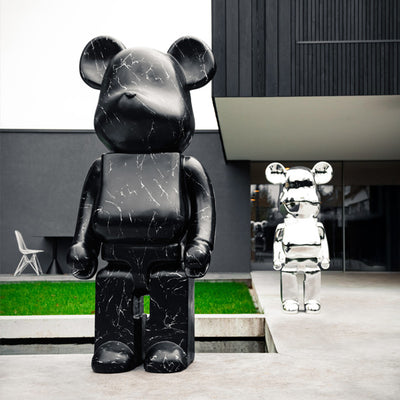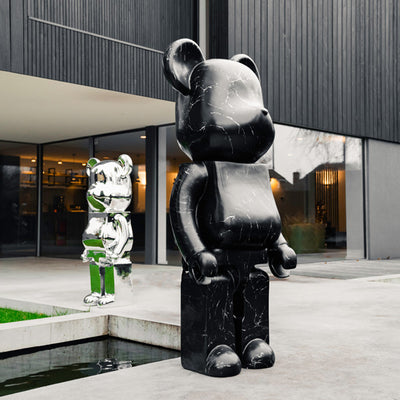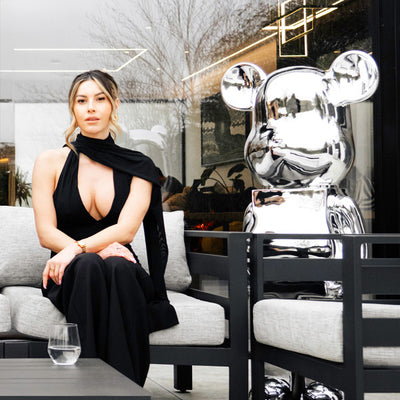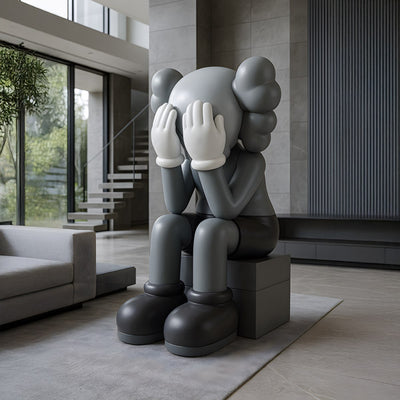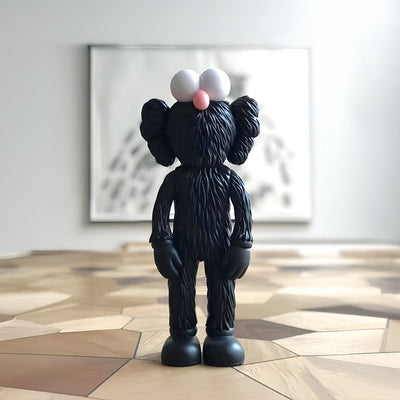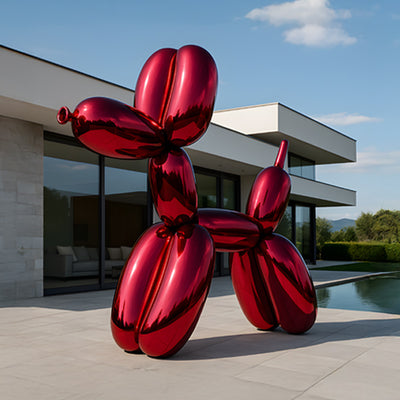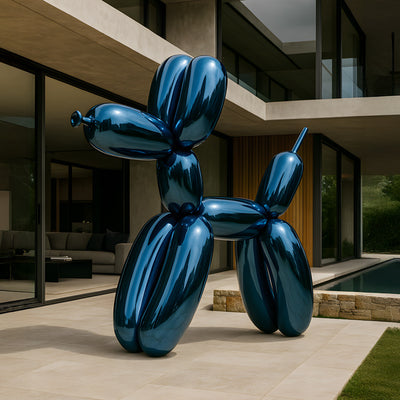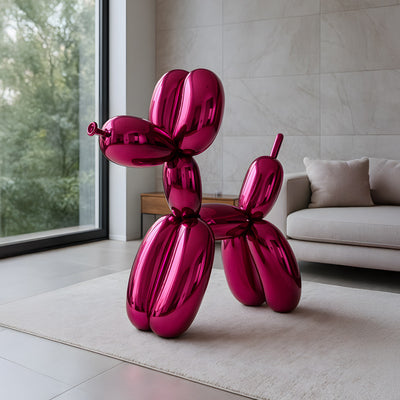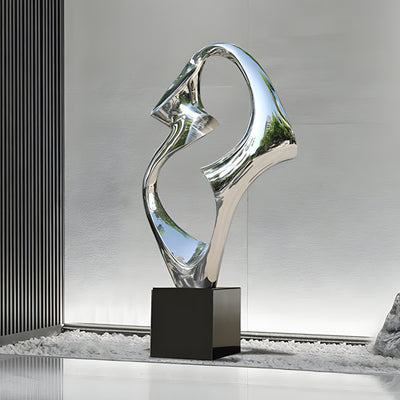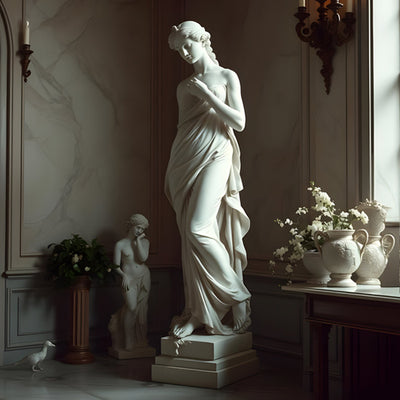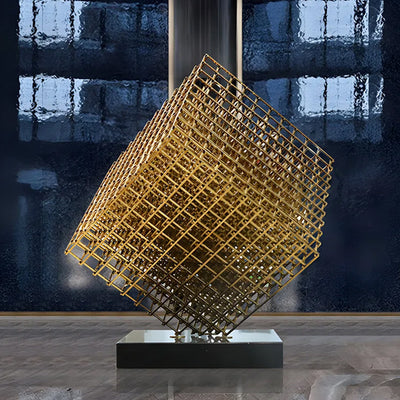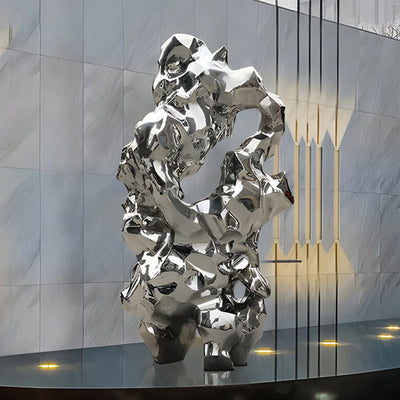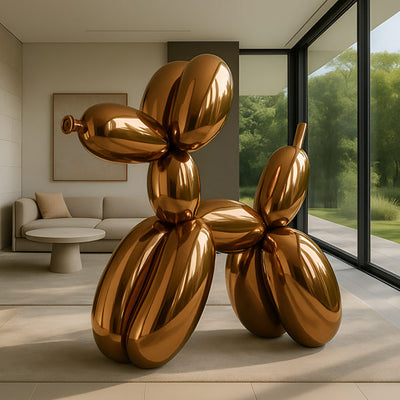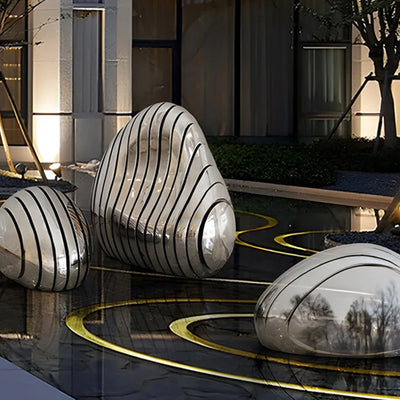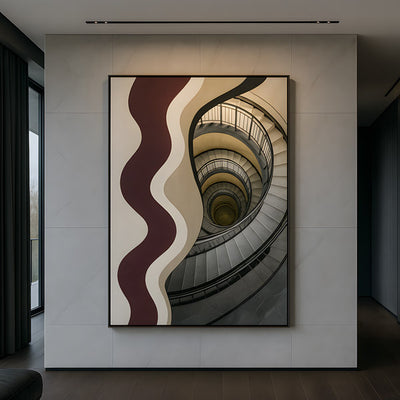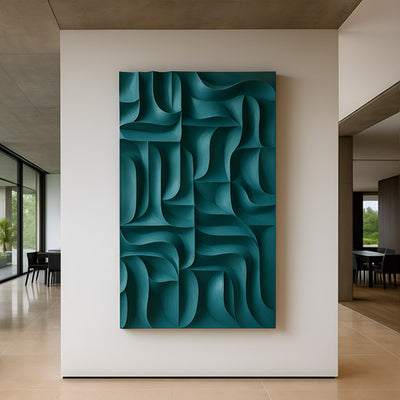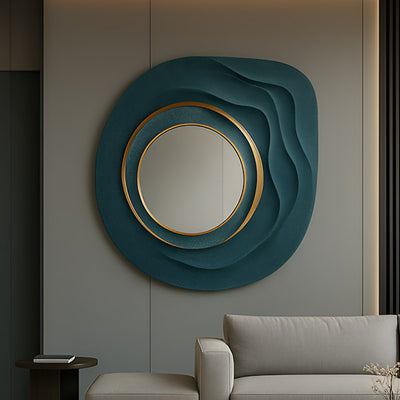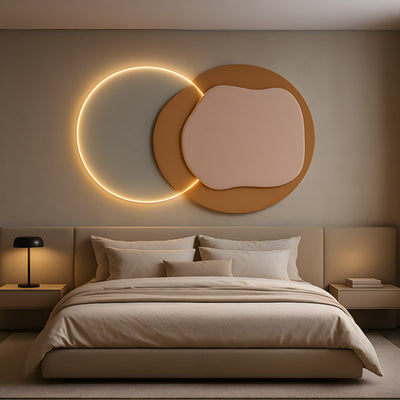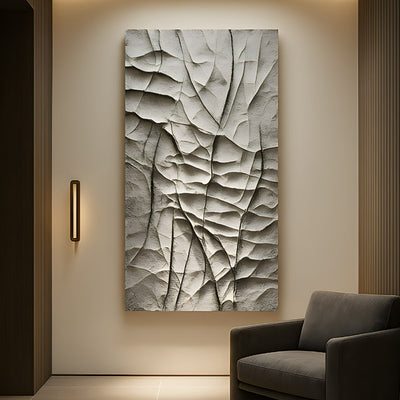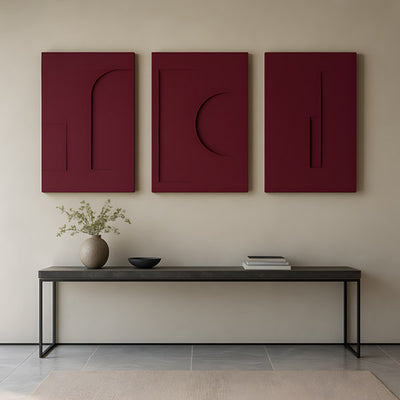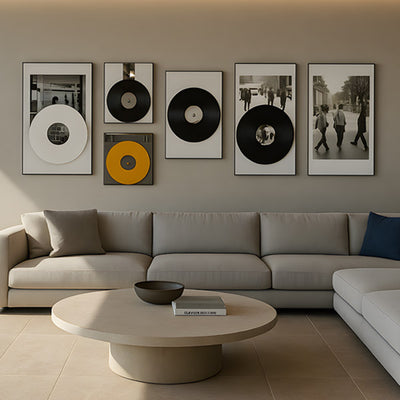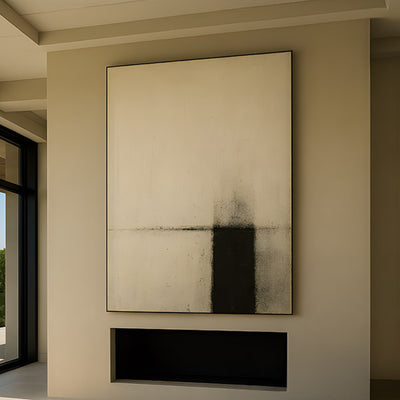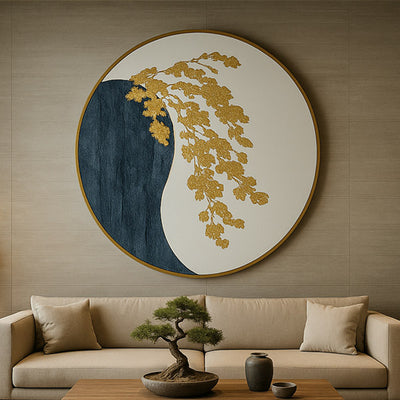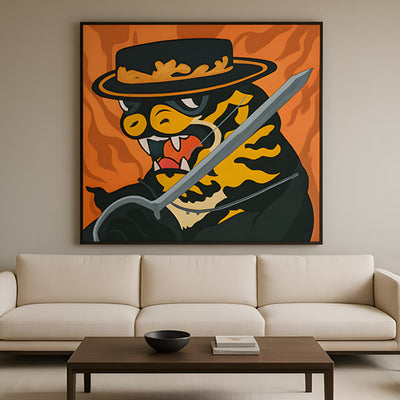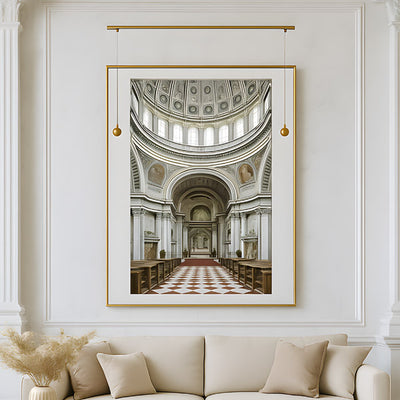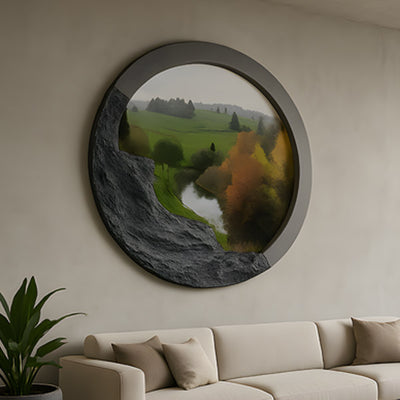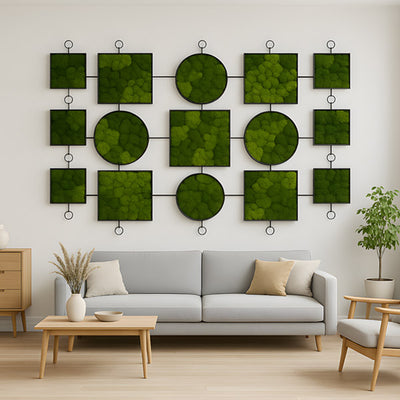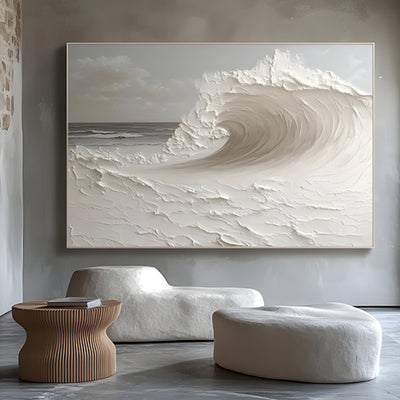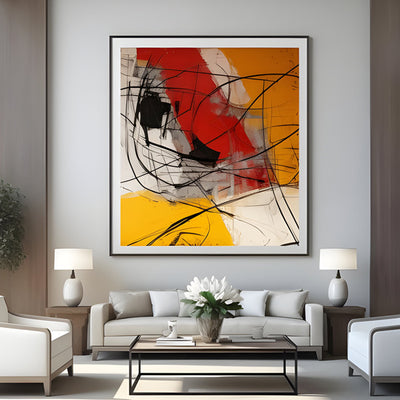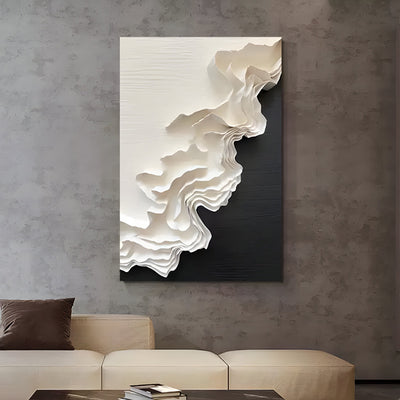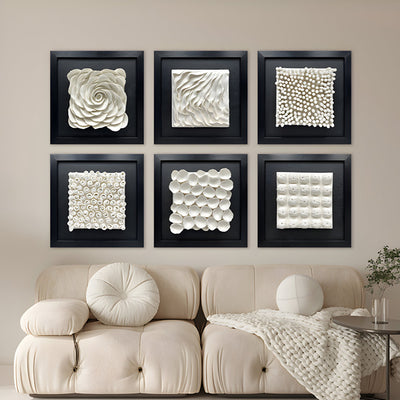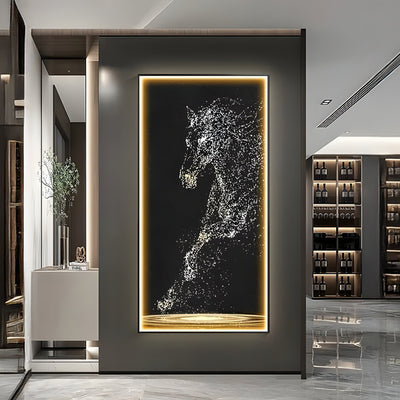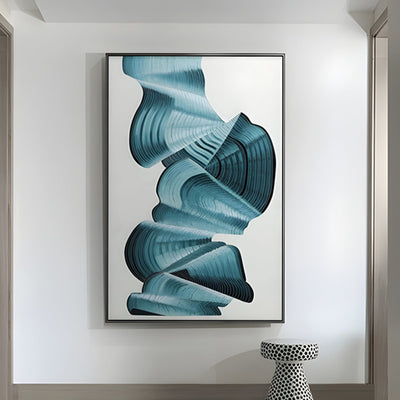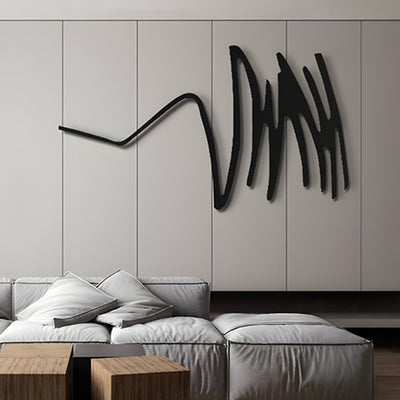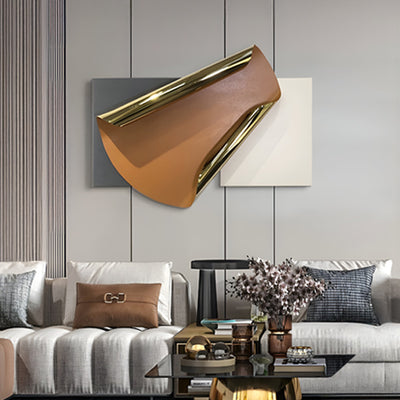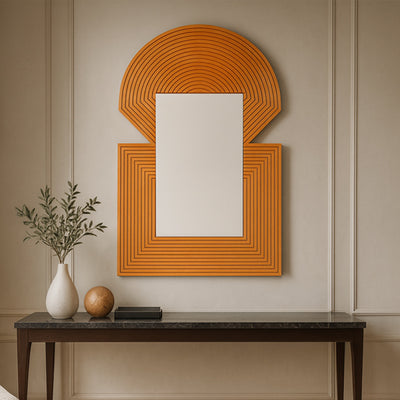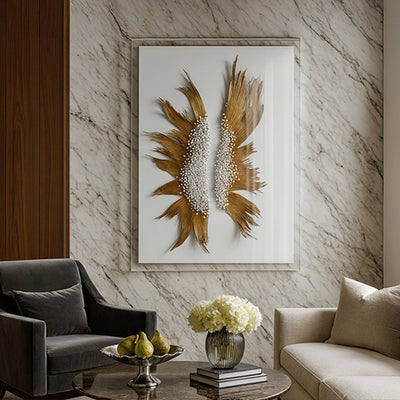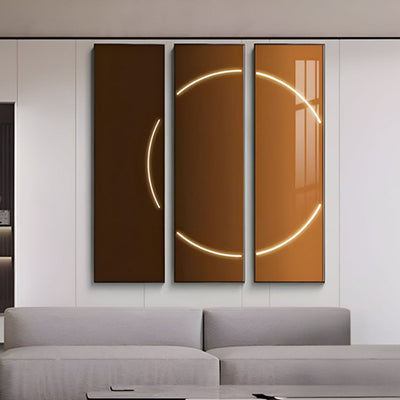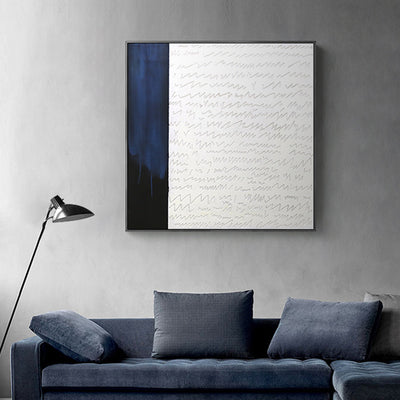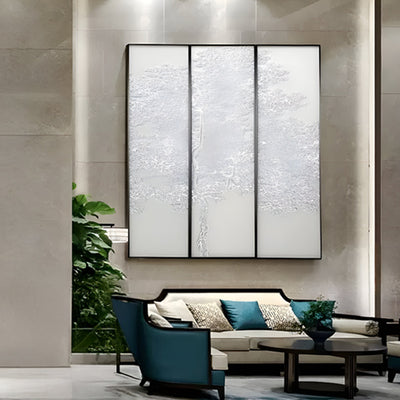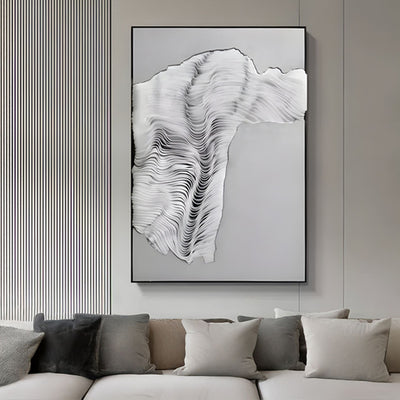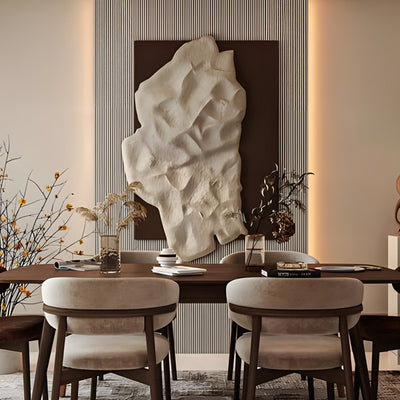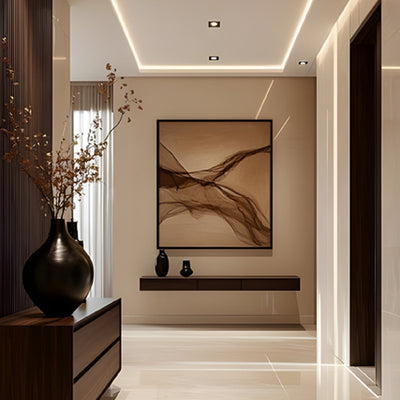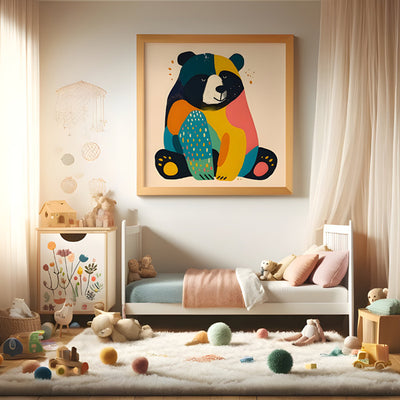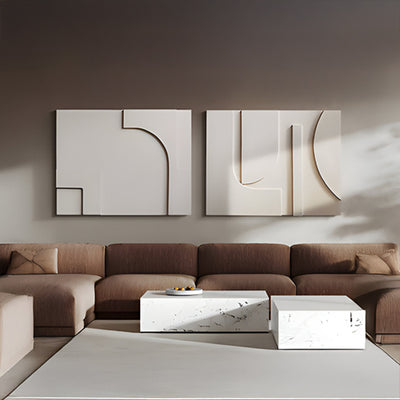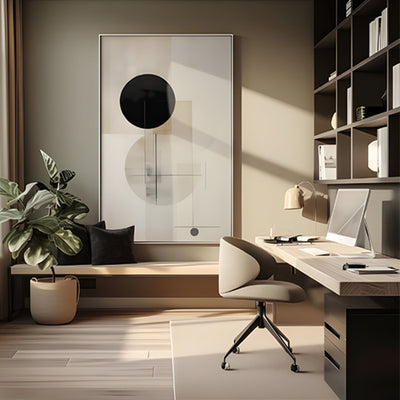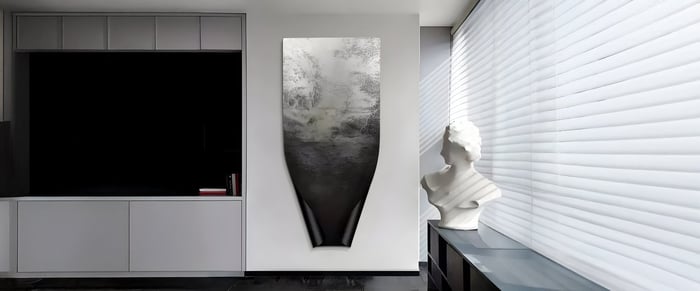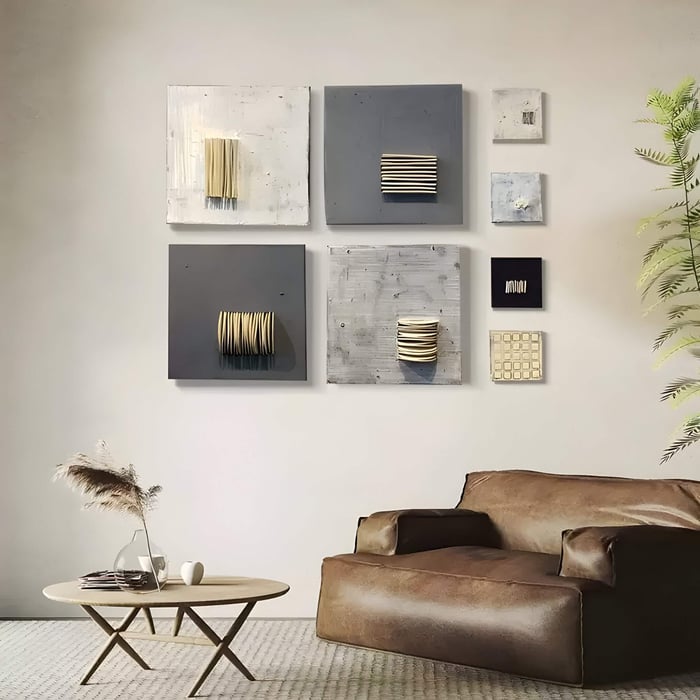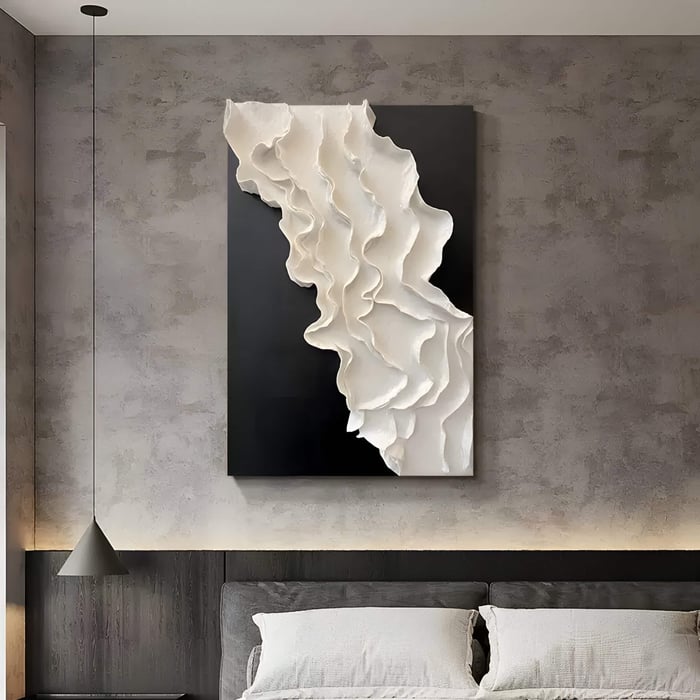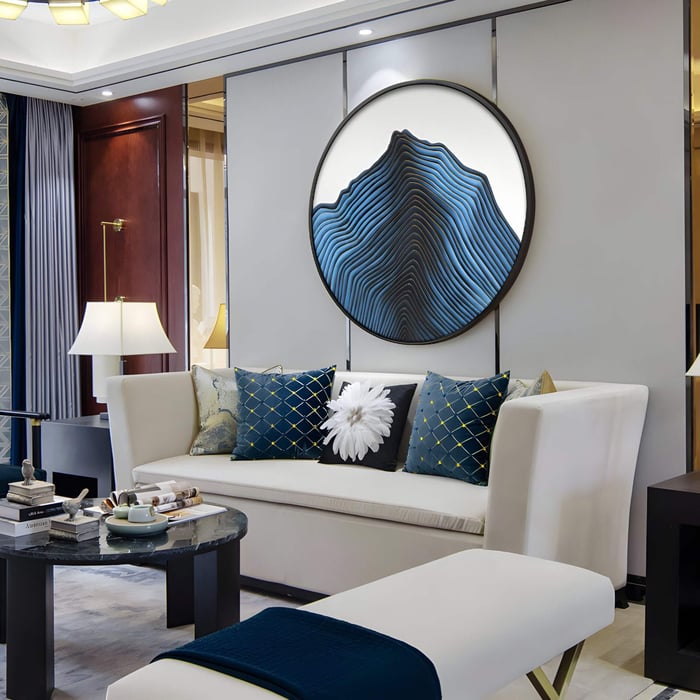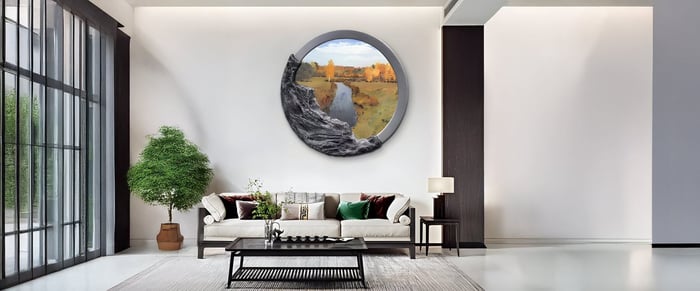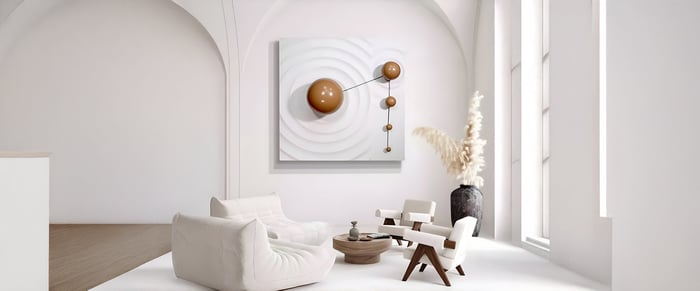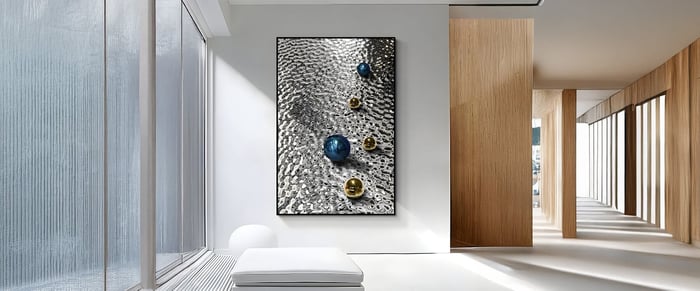Introduction
What if your walls could ease your stress? In today’s fast-paced world, many people are turning to their homes as sanctuaries of calm, and the art we choose plays a vital role. Rooted in the principles of simplicity, mindfulness, and nature, zen art offers a visual escape from chaos. Its quiet elegance is not only aesthetically pleasing but also emotionally grounding.
Originating from traditional Japanese and Zen Buddhist aesthetics, zen art values negative space, organic materials, and effortless harmony. It invites you to slow down, breathe, and find stillness in the everyday. Now embraced in modern wellness-driven interiors, it’s becoming a popular choice for those seeking serenity through intentional design.
The Emotional Power of Zen Art in Modern Interiors
At the heart of zen art is the philosophy that less is more. By stripping away the unnecessary and embracing the imperfect, it fosters clarity and emotional balance. Visual elements like soft brushstrokes, monochromatic ink washes, and muted earthy tones are designed to calm the senses rather than stimulate them.
This art form is rooted in emptiness, not as a void, but as space for presence and awareness. A single bamboo stalk on a blank canvas or the ripple of ink across paper allows your mind to pause. In cluttered environments, these quiet focal points restore equilibrium.
Incorporating zen-inspired visuals into your space supports stress reduction, mental clarity, and a gentle sense of order. For homeowners and professionals alike, it offers an elegant way to align decor with emotional well-being.
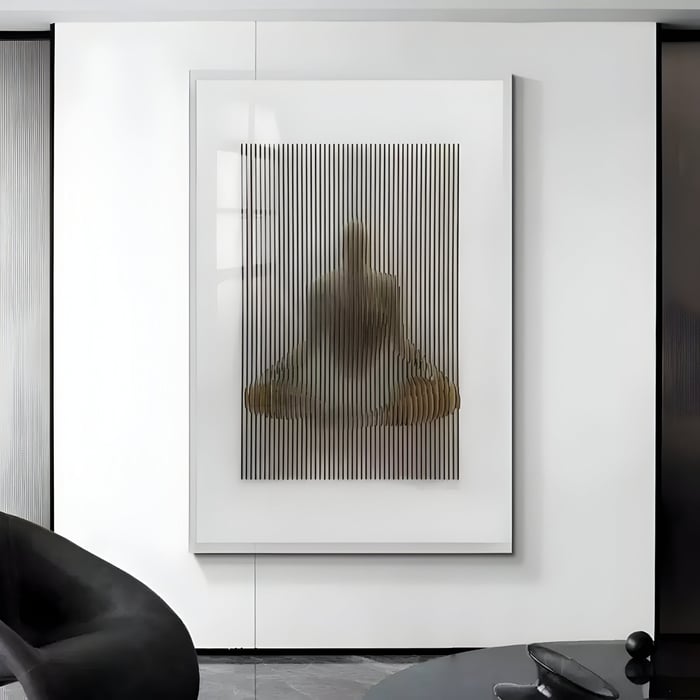
How Zen Art Brings Balance to Your Living Room Art Display
The living room is often the busiest zone in a home, used for entertaining, lounging, and everything in between. Integrating zen art here helps anchor the space, offering a visual cue to slow down and engage mindfully.
Large-scale wall pieces featuring fluid ink brushwork or minimalist mountain scenes can create a peaceful focal point above a sofa or mantle. These visuals pair beautifully with living room art that emphasizes space and simplicity.
Styling Tips:
Keep furnishings minimal and choose natural textures like linen, wool, and wood.
Hang art with ample breathing room around it to preserve a sense of openness.
Use a neutral palette, taupe, sage, ivory, so the artwork becomes the emotional centerpiece.
By creating balance between elements, you turn your living room into a sanctuary of stillness.
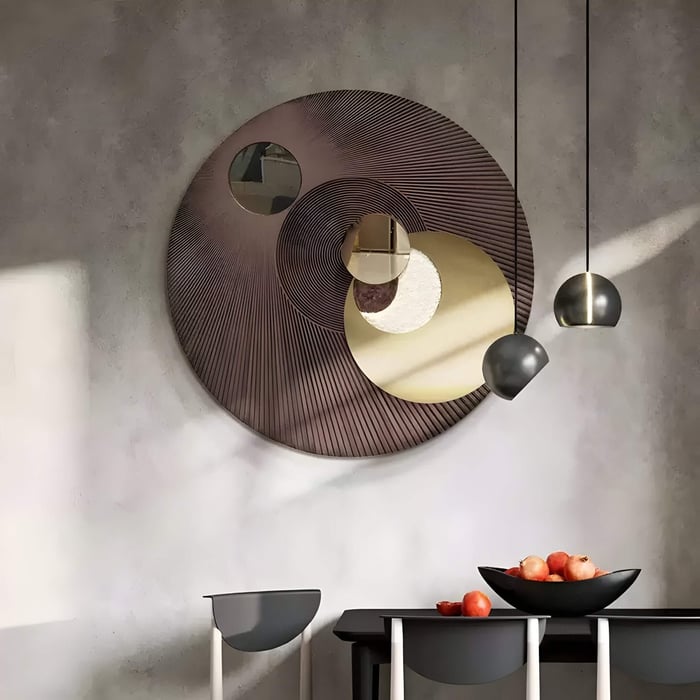
Dining Room Art That Encourages Presence & Connection
The dining room is more than a place to eat, it’s a space for gathering, conversation, and shared rituals. Choosing the right dining room art can influence the tone of these interactions. Zen art contributes a sense of grounded calm that helps shift focus inward, promoting connection and presence.
Vertical scrolls, minimalist landscapes, or nature-inspired silhouettes (like lotus flowers or branches) work especially well in this space. These visuals encourage stillness without demanding attention.
Placement Tips:
Hang your piece above a sideboard or on a clean central wall, ensuring it aligns with the furniture lines.
Choose artwork with soft, undistracting movement, such as watercolor gradients or ink waves.
Consider pairing with natural centerpieces like a stone bowl or bonsai tree.
The result is a more mindful dining experience, one where both food and atmosphere nourish the soul.
Bedroom Art with Zen Style: A Path to Restful Sleep
In the bedroom, calm is everything. Overstimulation, whether from bold colors, busy patterns, or clutter, can disrupt rest. This is where zen art truly shines. With its quiet composition and soothing tones, it fosters an atmosphere that supports deep, restorative sleep.
Abstract ink circles, soft brushstrokes, or pale floral silhouettes are ideal for bedroom art. These visuals evoke a gentle rhythm that aligns with nighttime routines.
Placement Tips:
Hang a horizontal piece above the bed to frame the headboard naturally.
Choose art with blue, grey, or beige hues to induce a calming visual effect.
Avoid harsh contrast, opt for soft transitions and matte textures.
A well-placed piece of Zen-inspired decor can turn your bedroom into a haven for relaxation and renewal.
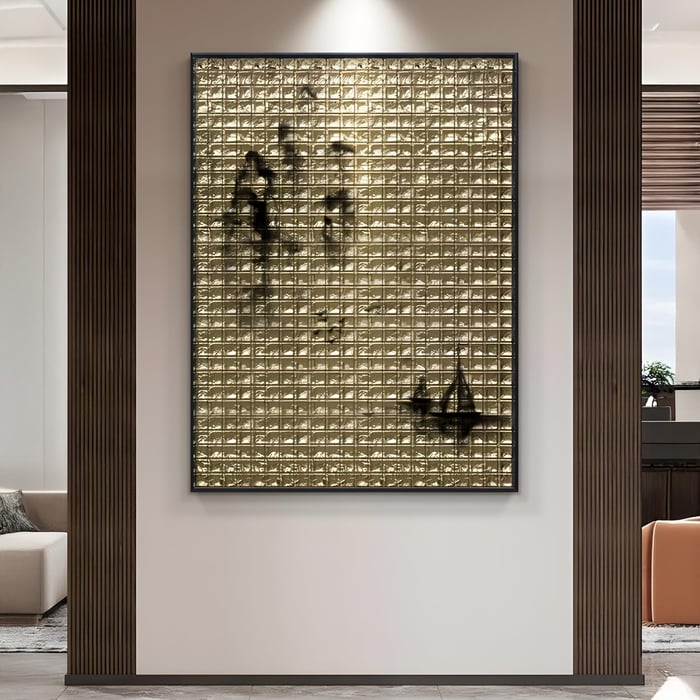
Transforming Transitional Spaces with Zen Hallway Art
Hallways and corridors are often treated as afterthoughts, yet they influence how we move and feel between rooms. With the right hallway art, you can transform these areas from overlooked to intentional. Zen art, with its vertical flow and balanced structure, is ideal for narrow or transitional spaces.
Choose vertical triptychs, slender scrolls, or repeated nature motifs to guide the eye along the passage. Monochrome ink sketches or minimal tree silhouettes are visually elongating and unobtrusive.
Design Tips:
Use consistent spacing for gallery-style layouts to maintain order and symmetry.
Light the artwork subtly with warm LED strips or wall sconces.
Pair with natural textures like pebble flooring or bamboo accents.
In doing so, even transitional zones become part of the home’s larger meditative flow.
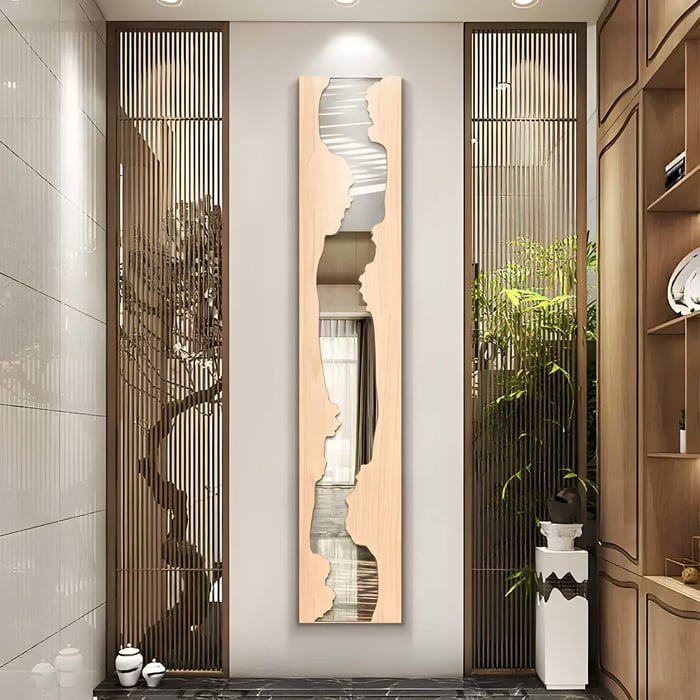
Creating a Unified Mood with Zen Art Across Your Home
To truly harness the calming potential of zen art, consider its placement across multiple rooms. A unified theme, be it through color palette, subject matter, or medium, creates flow and cohesion. This is especially effective in open-plan homes or smaller spaces where visual continuity matters.
Repeated use of natural imagery (stones, reeds, water), restrained color schemes, and open compositions makes the entire space feel intentional and at ease. The goal isn’t to match pieces exactly, but to maintain harmony through tone and energy.
Unifying Techniques:
Use similar frame finishes (e.g., raw wood or black minimal frames).
Stick to a consistent visual rhythm: airy, balanced, centered.
Mix horizontal and vertical formats to fit different wall shapes while maintaining visual unity.
When thoughtfully arranged, zen art becomes more than just decoration, it becomes the silent language of peace in your home.
Conclusion
In a world full of visual noise, zen art invites you to embrace silence, space, and simplicity. It calms the mind while enriching the home with meaning and beauty. From tranquil living room art to intentional dining room art, and from restful bedroom art to mindful hallway art, this style transforms how a room feels, moment by moment.
Its true power lies not in its complexity, but in its ability to open space for thought, rest, and intention.
Ready to bring balance into your home? Browse our curated collection of Zen Art, or explore more design guides on mindful interiors.
Stillness isn’t a place, it’s a presence you can create.

